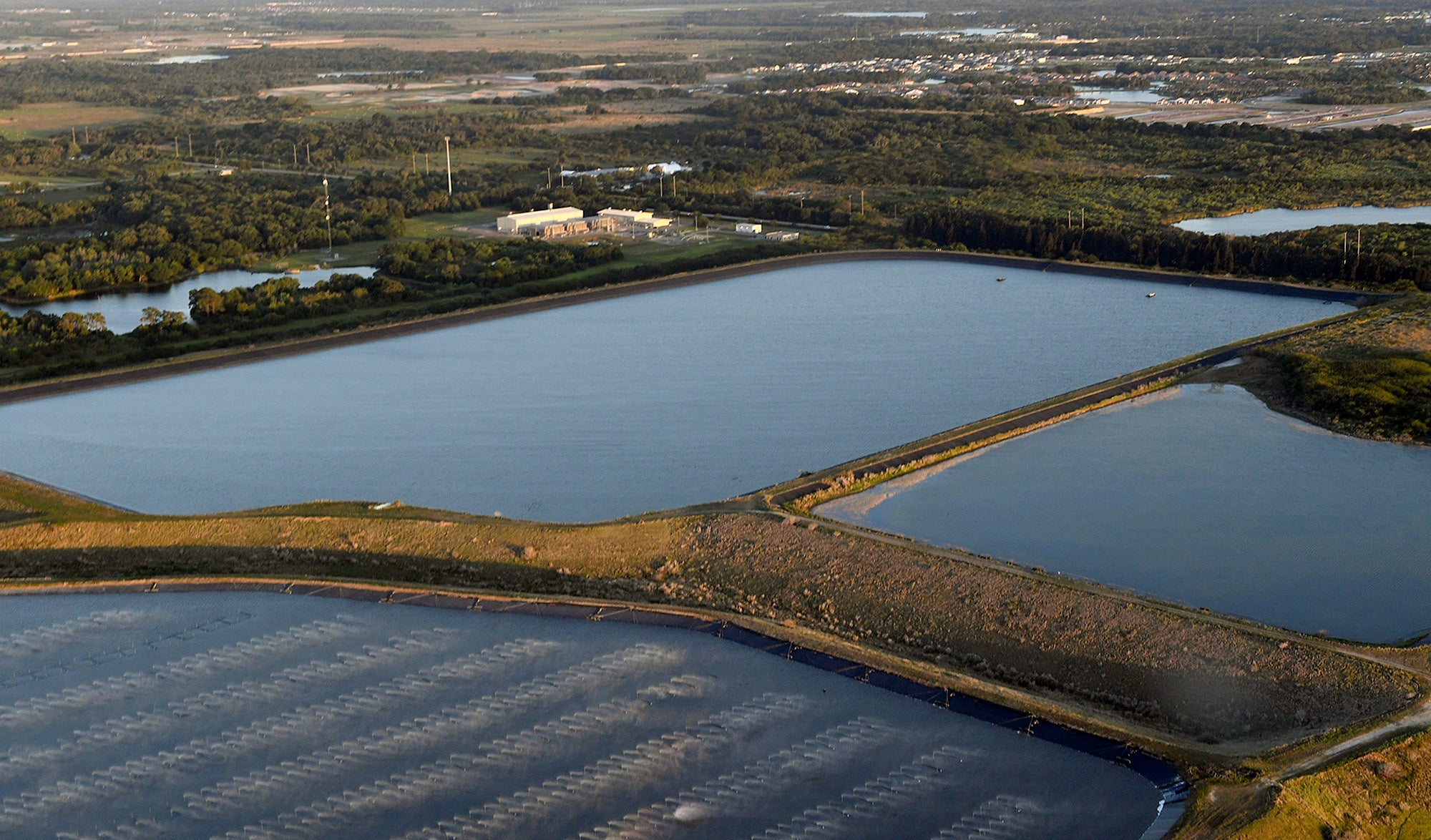Leak at wastewater pond prompts evacuations in Florida
Florida's governor has declared a state of emergency after a significant leak at a large storage pond of wastewater threatened to flood roads and burst a system that stores polluted waters

Your support helps us to tell the story
From reproductive rights to climate change to Big Tech, The Independent is on the ground when the story is developing. Whether it's investigating the financials of Elon Musk's pro-Trump PAC or producing our latest documentary, 'The A Word', which shines a light on the American women fighting for reproductive rights, we know how important it is to parse out the facts from the messaging.
At such a critical moment in US history, we need reporters on the ground. Your donation allows us to keep sending journalists to speak to both sides of the story.
The Independent is trusted by Americans across the entire political spectrum. And unlike many other quality news outlets, we choose not to lock Americans out of our reporting and analysis with paywalls. We believe quality journalism should be available to everyone, paid for by those who can afford it.
Your support makes all the difference.Florida Gov. Ron DeSantis declared a state of emergency Saturday after a significant leak at a large pond of wastewater threatened to flood roads and burst a system that stores polluted waters.
Officials in Florida ordered more than 300 homes to be evacuated and closed off a highway Saturday near the large reservoir in the Tampa Bay area north of Bradenton.
Residents who live around the Piney Point reservoir received an alert via text saying to leave the area immediately because the collapse was “imminent.” Authorities expanded the evacuation area later Saturday to include more homes, but said they were not planning to open shelters.
The Florida Department of Environmental Protection says a break was detected Friday in one of the walls of a 77-acre (33-hectare) pond that has a depth of 25 feet (8 meters) and holds millions of gallons of water containing phosphorus and nitrogen from an old phosphate plant.
Officials brought in rocks and materials to plug the hole in the pond late Friday into Saturday, but the attempt was unsuccessful.
Manatee County Administrator Scott Hopes said at a press conference Saturday that the most pressing concern is that the water could flood the area, which he said was agricultural and low in population density.
“We are talking about the potential of about 600 million gallons (2.3 billion liters) within a matter of seconds and minutes leaving that retention pool and going around the surrounding area,” Hopes said.
Workers have been pumping out thousands of gallons per minute at the site to bring the volume down in the event the pond bursts. Pumping the entire pond would take 10 to 12 days. Others have been working to chart the path to control how the water flows from the pond into the Tampa Bay.
DeSantis' declaration of a state of emergency allocates more pumps and cranes to the area. The owner, HRK Holdings, did not respond to a request for comment on Saturday.
The pond where the leak was discovered is at the old Piney Point phosphate mine, sitting in a stack of phosphogypsum, a waste product from manufacturing fertilizer that is radioactive. It contains small amounts of naturally occurring radium and uranium, and the stacks can also release large concentrations of radon gas.
Hopes says that if the pond collapses, there is a risk it could destabilize the walls of other areas in the plant.
“The pond is basically salt water. We saw ducks yesterday, there are snooks swimming in there. It’s sustaining wildlife. That’s not the case for the other two pools,” he said, adding the wastewater in the other ponds would need to be treated to reduce ammonium content and other materials.
The executive order declaring the state of emergency said the breached structure has 480 million gallons (1.8 billion liters) of seawater mixed with process water and the embankment materials from the old fertilizer manufacturing plant.
Agriculture Commissioner Nikki Fried urged the governor in a letter to convene an emergency session of the state cabinet to discuss a plan, adding that this property has seen similar leaks in the past.
“The immediate evacuation of residents, disruption of families during Easter weekend, and potential environmental catastrophe requires the attention and action of Florida’s statewide elected leadership,” Fried said.
In 2016, more than 200 million gallons of contaminated waste water from another fertilizer plant in central Florida leaked into one of the state’s main aquifers after a massive sinkhole opened up in a pond of a phosphogypsum stack.
There are at least 70 gypsum stacks in the United States and about 27 in Florida, mostly in the region of west-central Florida. The wastewater stored in the gypsum stacks can’t be seen from the ground as the piles surrounding the structure can go as high as 500 feet (150 meters).
Subscribe to Independent Premium to bookmark this article
Want to bookmark your favourite articles and stories to read or reference later? Start your Independent Premium subscription today.